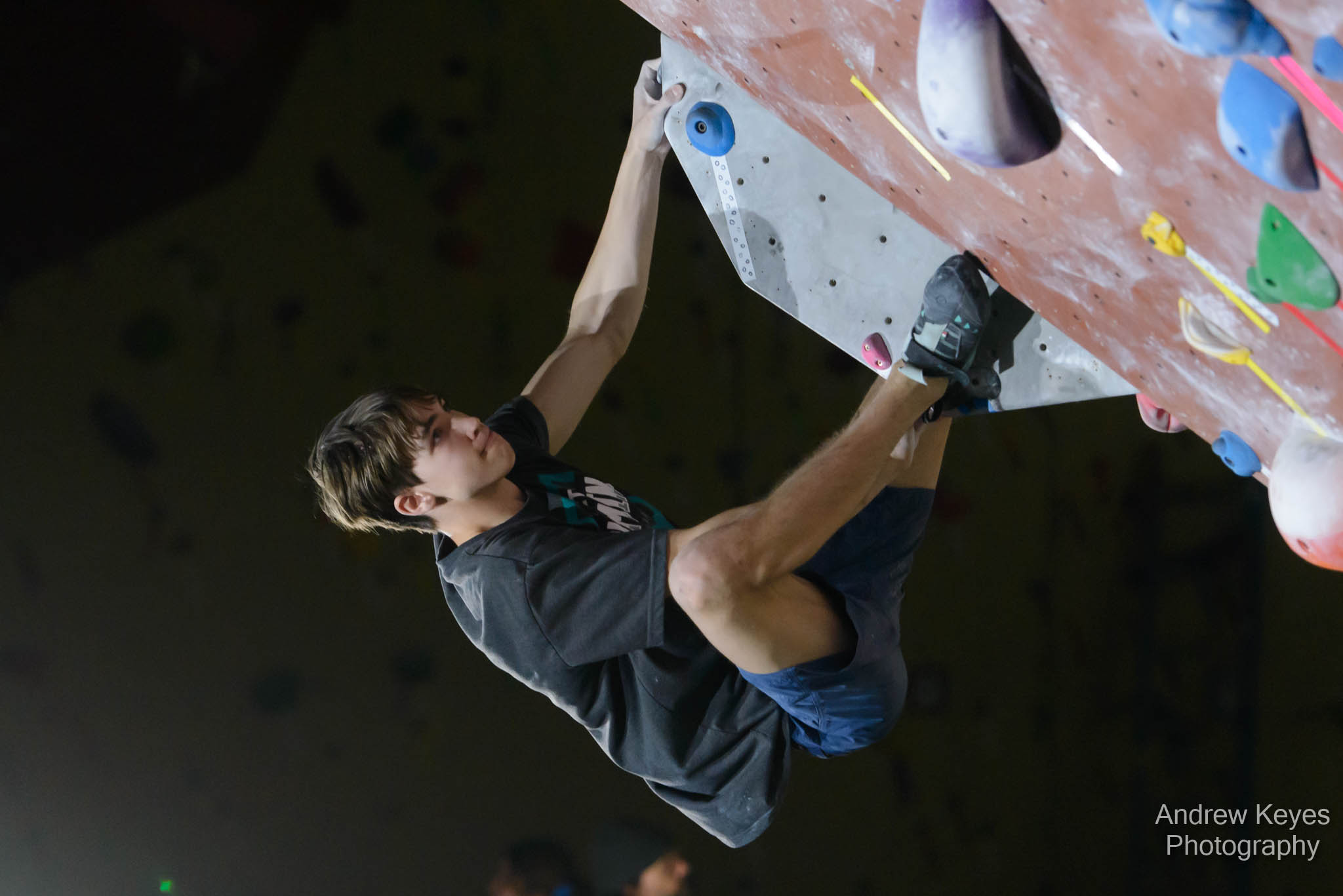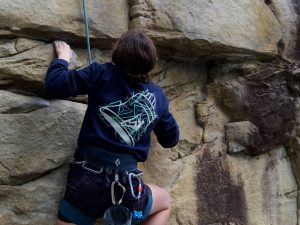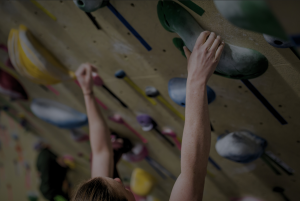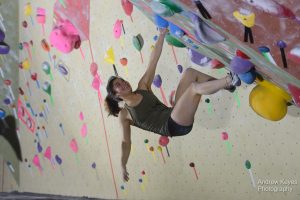Let's Talk About Straight-Arming On Vertical Walls.
What is straight-arming and why should every climber do it? We covered straight-arming on slab in the previous article, How to Climb on Slab Using This Technique. Even though the concept is essentially the same as on the vertical, there are some major differences. We’ll cover them in this article.
Straight arming is one of the simplest skills to explain and demonstrate. In fact, we can sum it up in one sentence:
Keep your arms as straight as possible as often as possible.
Vertical and Overhangs
The trouble is that this skill is one of the most frequently neglected in practice.
And there’s a reason for this. New climbers, in particular, have a tendency to pull in with their arms in order to get their weight over their feet. They do this often in an effort to feel more stable.
Unfortunately, pulling in onto bent arms (one form of something called “over-gripping”) wastes a great deal of energy. This is because, in addition to putting more weight on our hands, our natural grip strength is weaker when our arms are bent. We are putting more weight onto a weaker muscle. This leads directly to getting tired or pumped, far more rapidly than we otherwise would.
The proper approach to straight-arming is to first recognize that you only need to bend your arms when you are actually doing a move.
If you are on the wall, either resting or planning your next move, there is no need for your arms to be bent. Instead, the goal is to sag onto straight arms, feeling your body pull up on your shoulders, and then, in turn, slightly squeezing your neck.
Steeper Angles
The feel of straight-arming changes slightly on steeper angles, though the mechanics are the same. As we have discussed, the proper application of straight-arming involves putting as much weight as possible on your feet, while keeping your arms straight.
Let’s talk about vertical weight-shifting. If you remember from a previous article, ‘What Every Climber Needs to Know About Balance,’ getting your weight over your feet requires arching your back slightly in order to bring your hips in. This will also help bring your hips over to your upper foot.
As a result, on a vertical face, while your hips should be as close to the wall as possible, your shoulders will be leaning slightly away from the wall. This will cause a feeling of tension in your shoulders if you keep your arms straight. This is exactly the feel you are aiming for. This feeling of tension is called putting your weight into your shoulders and will come up several times in further skills.
Try This Straight-Arming Drill
This leads to one of the few useful drills I have discovered in climbing-straight-armed climbing. I’ve mentioned straight-arming on the slab, but its benefits are much more obvious on steeper walls.
Take a route (a boulder problem will do, but a longer route is most effective) that you have climbed before. Preferably you want one that was particularly pumpy. The best choice is a route that you get very pumped on and have trouble repeating because of that.
Starting from the ground, climb the route without bending your arms at any point.
When done properly this drill should show you a few things:
Results of Properly Straight-Arming
1) If you actually manage to keep your arms straight for the entire route (or even for large sections of the route) you should immediately notice that you are much less pumped than you were the last time you got on it.
2) Moving from hold to hold without bending your arms works best when you think of a move not as pulling up to the next hold, but rather as rotating around or swinging from your shoulders (like a monkey in a tree!). That feeling will become a critical piece in more advanced skills.
3) It’s way more difficult to keep your arms straight than it seems like it should be!
Practice!
As with the slab, this drill is relatively easy to do on easier routes. But as holds get smaller and further apart, and the routes get more difficult, there will be moves that absolutely require you to bend your arm.
Once again, the approach when moving up in the grades is to minimize the amount of time you spend with your arms bent, and always remind yourself to get them straight at every opportunity!
Overhangs
Straight-arming on ever steeper territory obeys the same principles as on slab and vertical and only differs in feel from vertical climbs by a matter of degree.
As routes become steeper, straight-arming puts more tension into your shoulders (up to a maximum on a horizontal roof), and requires more arch in your lower back to isolate as much weight as possible onto your feet.
Its value, though, too becomes more apparent, as steeper climbs inevitably require more effort from your hands to stick to the holds. It is at this angle that over-gripping is a common, and devastating, habit to overcome.
Be Careful of Over-gripping
Over-gripping is a term used to describe two related concepts.
The first is the one we referred to above. It is the act of keeping your arms bent in order to grip a hold. As we discussed at the beginning of this article, this creates a two-pronged issue of putting more force onto a weaker grip. This causes the pump clock to run at double speed.
The second concept is a bit simpler. We also use over-gripping to refer to effectively squeezing a hold harder than necessary in order to stay on.
Overhangs have a tendency to bring out both habits in many climbers. And straight-arming is the solution to the first. The solution to the second is a bit more complicated, but it starts with understanding how best to grab each hold. We’ll cover this in our next article, ‘What to Know About Climbing: Basic Hold Use.’
What is Straight-Arming and Why Every Climber Should Do It
What is straight-arming and why should every climber do it? It saves your energy and makes you a more efficient climber! Why wouldn’t you practice this technique?
All material is reprinted with the permission of the author. Copyright 2022 David H. Rowland. All rights reserved.









